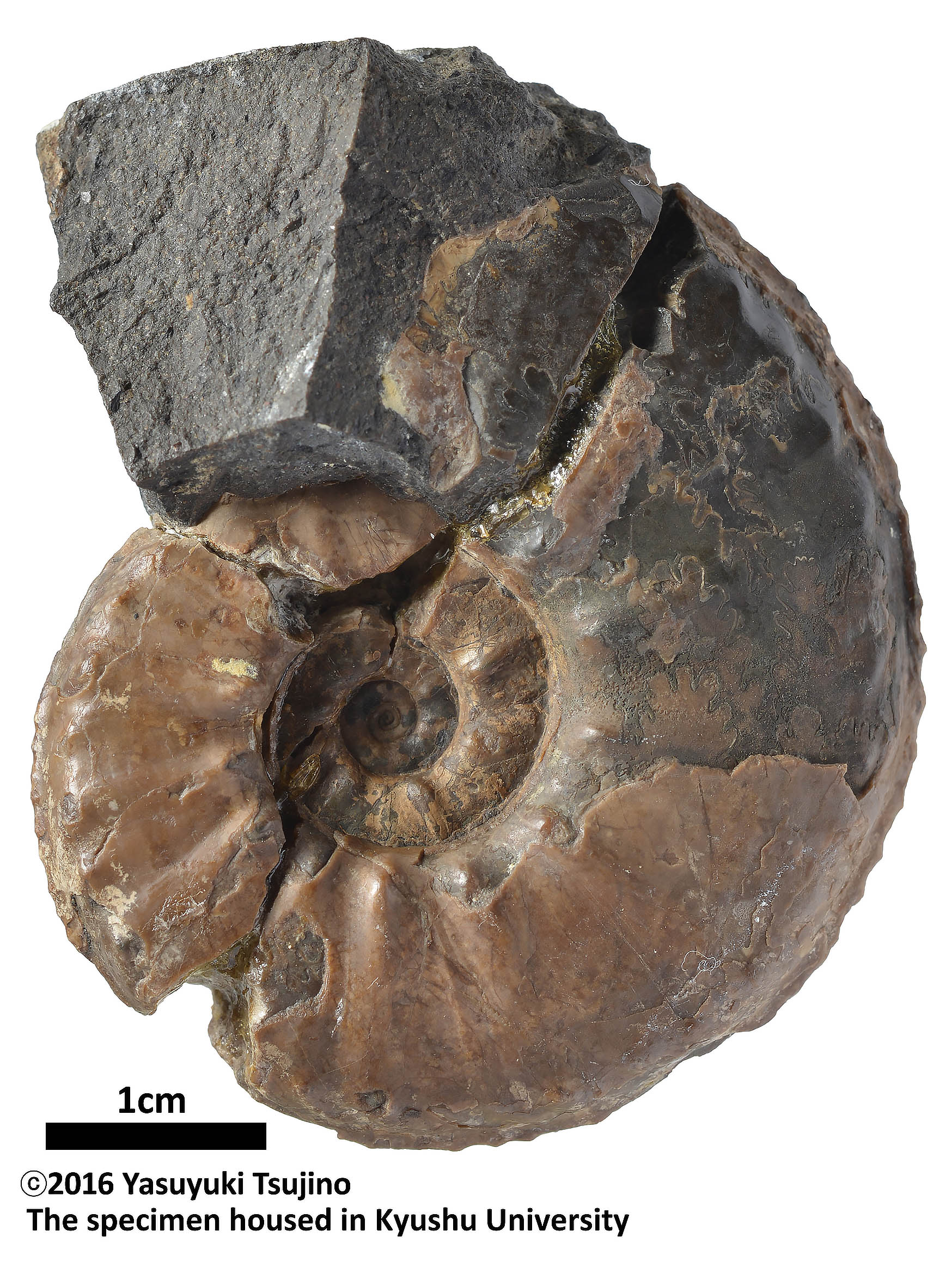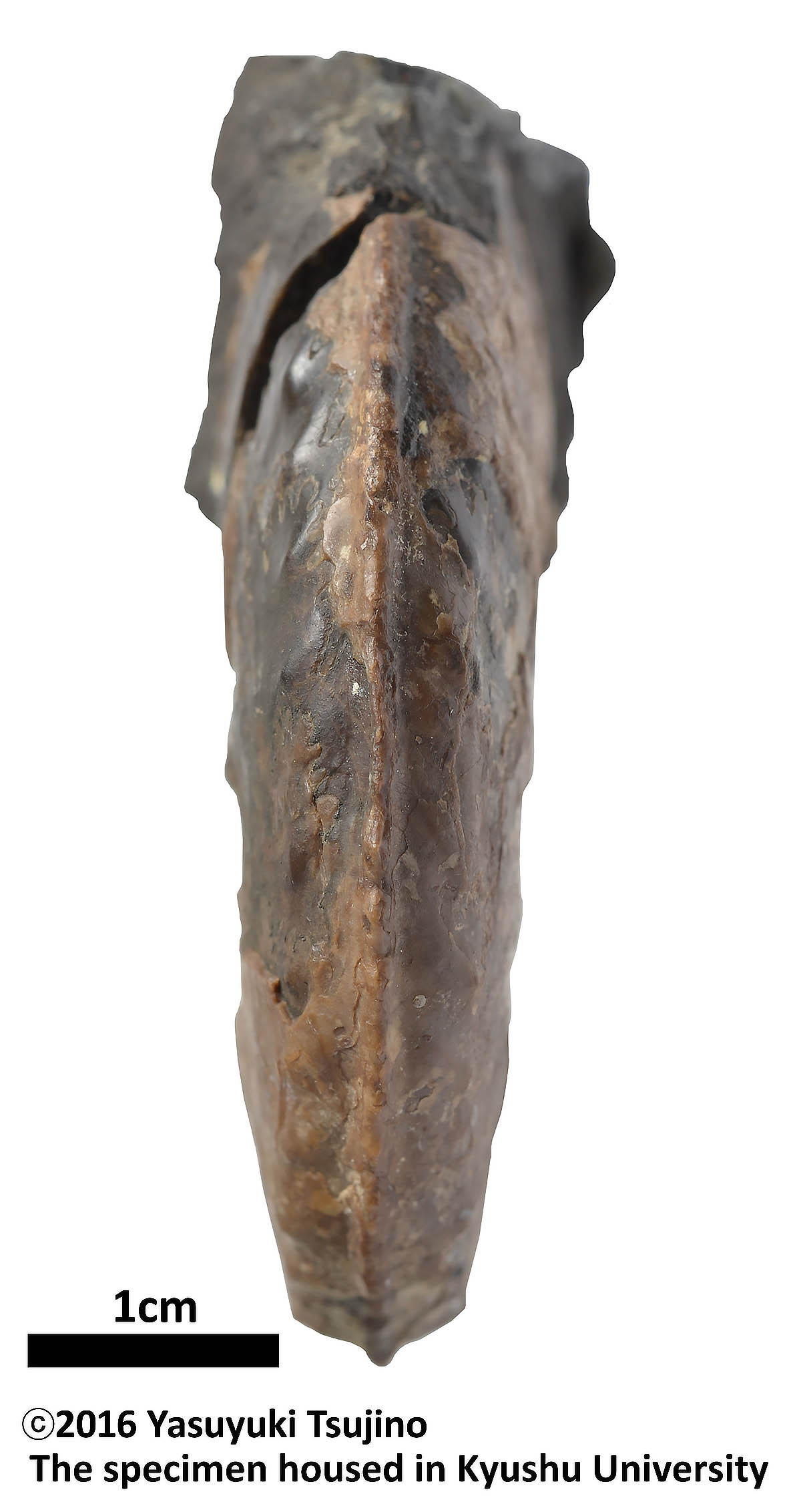| Scientific name |
Lymaniceras planulatum |
|


|
| Author |
Matsumoto, 1965 |
| Reference |
Mem. Fac. Sci., Kyushu Univ., Ser. D (Geol.), Vol. 16, No. 1, p. 31, pl. 7, figs. 1 - 5; pl. 8, figs. 1 - 3, 6 - 8; text - figs. 11 - 12, 14, 15; text - fig. 10 |
| Type specimen |
Holotype: GK. H5430 (pl. 7, fig. 1; text - fig. 10) / Paratypes: GK. H5465 (pl. 7, fig. 2), GK. H5467a (pl. 7, fig. 3; text - fig. 12), GK. H5476 (pl. 7, fig. 4), GK. H5474 (pl. 7, fig. 5; text - fig. 11), GK. H5466 (pl. 8, fig. 1), GK H5429a (pl. 8, fig. 2; text - fig. 14), GK H5429b (pl. 8, fig. 3), GK H5528 (pl. 8, fig. 6; text - fig. 15), GK. H5468 (pl. 8, fig. 7), GK. H5472 (pl. 8, fig. 8), GK. H5427 (p. 31; listed only), GK. H5467b (p. 31; listed only) |
| Type locality |
Loc. Ik2012c, an outcrop in the lower course of the Pombetsu River, a tribuary of Ikushumbets, Mikasa City, central Hokkaido (141^58'42" E, 43^16'25" N) |
| Formation name |
Unit IIIa, Upper Yezo Group (zone of Inoceramus tenuistriatus - I. teshioensis) |
| Age |
Uppermost Turonian, Upper Cretaceous |
| Remarks |
|

